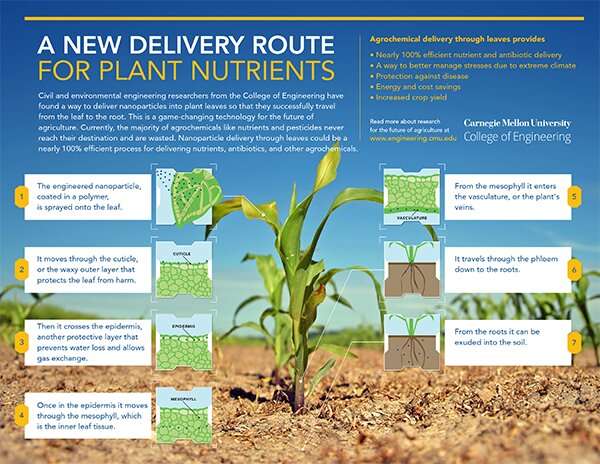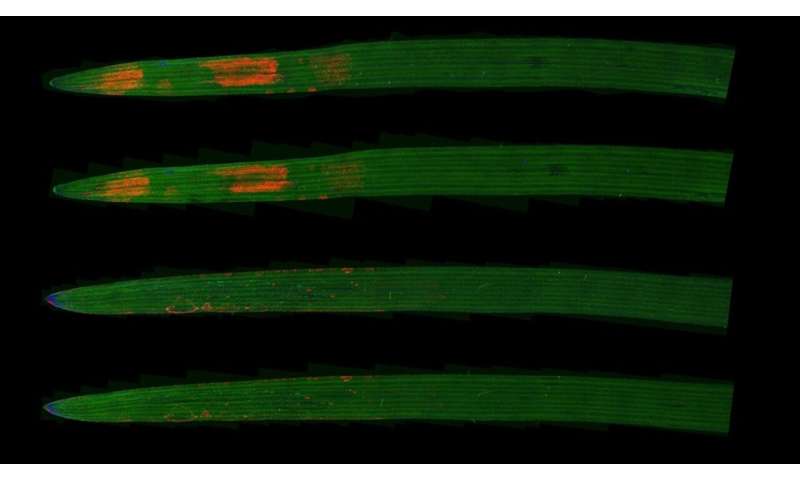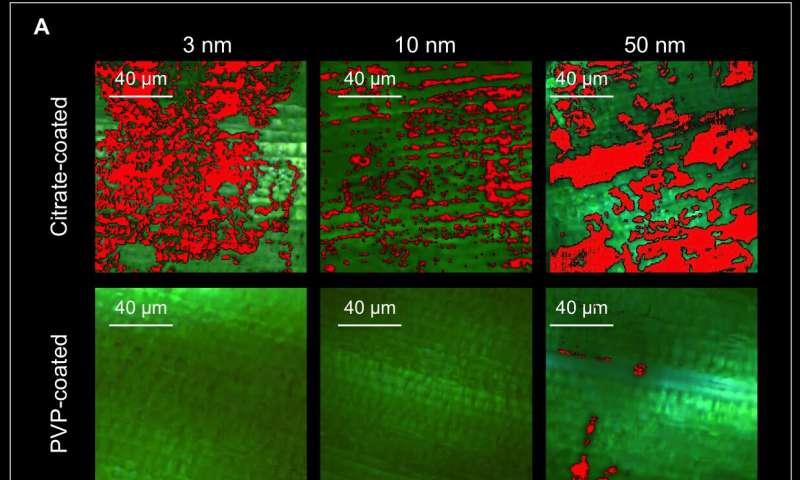A new route for plant nutrient delivery

Agriculture around the globe requires new solutions for food and water sustainability. With more frequent climate extremes, growing populations, increased food demand, and global crop threats, environmental engineers are searching for solutions to manage food production for the future, starting at the tiniest level.
With current practices, up to 95 percent of applied micronutrients and 99.9 percent of applied pesticides never reach their destinations and are wasted. They accumulate in the soil or run off into the ground water and cause collateral environmental damage, degrade soil, and waste the water and energy used in their production and application.
If growers could apply something to the leaf that could travel directly to the root, it could be a game changer for delivering nutrients, antibiotics and pesticides in a nearly 100 percent efficient way. Civil and Environmental Engineering Professor Greg Lowry, post-doctoral researcher Astrid Avellan, and a team of researchers have successfully discovered a way to apply nanoparticles to plant leaves so that they travel through the plant all the way to the root. Their results are published in a recent ACS Nano paper.
"The results from our paper really have the potential to transform the way we deliver agrochemicals to plants," said Lowry.
This is the first time that anyone has systematically studied how nanoparticles move through the leaf, into the plant, to the root, and exude into the soil.

The research team sprayed gold nanoparticles with a polymer coating onto the leaves of young wheat plants. Plants don't need gold, but since gold doesn't exist anywhere in the plant, they were able to easily identify where it traveled. They used wheat plants because they are an important crop in the United States and susceptible to nutrient deficiencies.
Once the nanoparticles are sprayed onto the leaf, they move through the cuticle, which is the waxy outer layer covering the leaf. Then, it crosses the epidermis. The cuticle and epidermis are layers that protect the leaf from harm, prevent water loss, and allow gas exchange for the plant to breathe. The nanoparticle then makes its way into the inner leaf tissue, or mesophyll. Finally, it moves into the vasculature of the plant, or the plant's veins. From there it can travel all the way down the stem and into the root, or up to higher leaves.
For the first time, the researchers demonstrated that once reaching the roots, nanoparticles can be exuded into the soil, adhering to the microenvironment that sticks to the roots called the rhizosphere. The rhizosphere is where the plant interacts with the soil, takes in nutrients, releases small acids, carbon dioxide, and proteins, and where bacteria and fungi can enter the plant. The only methods currently available to treat an unhealthy rhizosphere are mixing agrochemicals in the soil or applying water with the chemicals. In both cases a large amount of chemicals are lost. What the researchers have demonstrated is 100 percent efficient delivery that can decrease the amount of chemicals needed, lower the cost, and limit environmental contamination.
-

X-ray fluorescence mapping of gold translocation on wheat leaves grown hydroponically and foliarly exposed for 12 hours to gold nanoparticles coated in citrate (bottom) and PVP (top). Red: Gold, Green: Potassium Credit: Carnegie Mellon University -

Image of wheat leaf after 7 days of exposure. The red indicates presence of gold nanoparticles. The top row of figure A were exposed to gold nanoparticles coated in citrate, and the bottom row of figure A were exposed to gold nanoparticles coated in PVP. The images in figure B indicate that the leaves exposed to PVP-coated gold nanoparticles no longer have gold on the surface of the leaf, meaning it has gone into the leaf. Credit: Carnegie Mellon University
These tiny particles—which are smaller than 50 nanometers—could be one very important key to sustainably feeding the 10 billion people projected to be on the planet by 2050. For example, wheat plants growing in zinc-deficient soil turn yellow and crop production decreases as plants start to die. But if you could deliver zinc oxide nanoparticles through the leaves to reach the root, they could exude into the soil and make both the soil and the plant healthy.
Farmers could also deliver antibiotics to the plant. Once a plant gets bacteria into its vasculature, there's little that can be done to save it. But if antibiotic nanoparticles could be delivered through the leaves to get into the vasculature, they could prevent or treat systemic bacterial diseases.
Nanoparticles are also more effective than chemicals because engineers can design them to have specific properties. For example, they could design a nanoparticle that will stick to a leaf without dripping off when it rains. Or they can engineer the coating on the outside of the particle to respond to moisture or light. It is also possible to design nanoparticles that will be used in fewer quantities and are better for both the environment and human health than the conventional agrochemicals used currently. The possibilities are endless, and this is an important first step.
Delivering nanoparticles on plants in a 100 percent efficient way is part of Lowry's larger goals of atom-efficient agriculture (where every atom put on crops is used and not wasted) and combating societal challenges such as food insecurity.
"We're at this point where we've got to grow 80 percent more food, on the same amount of land, with less pollution resulting from it," said Lowry. "That's going to take a paradigm shift of the way we do agriculture, and that's what we're trying to help."
More information: Astrid Avellan et al. Nanoparticle Size and Coating Chemistry Control Foliar Uptake Pathways, Translocation, and Leaf-to-Rhizosphere Transport in Wheat, ACS Nano (2019). DOI: 10.1021/acsnano.8b09781
Journal information: ACS Nano





















